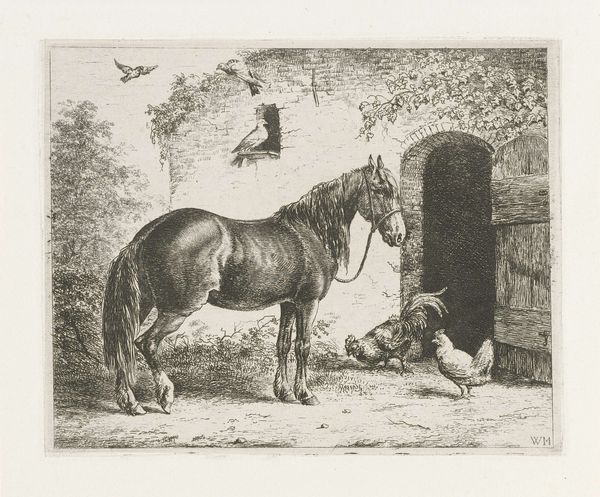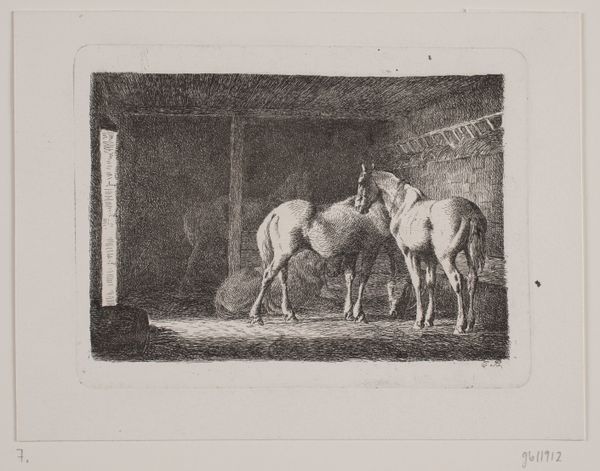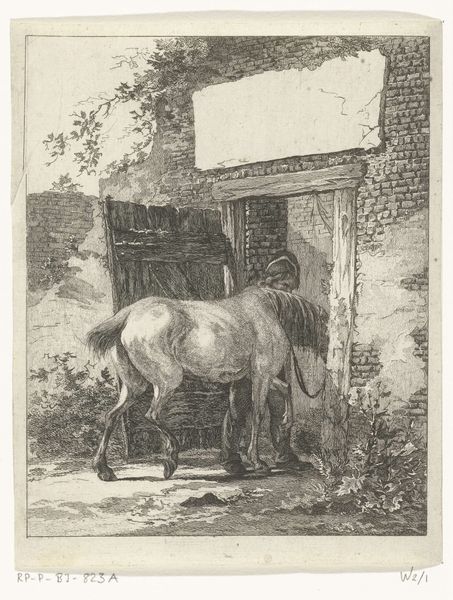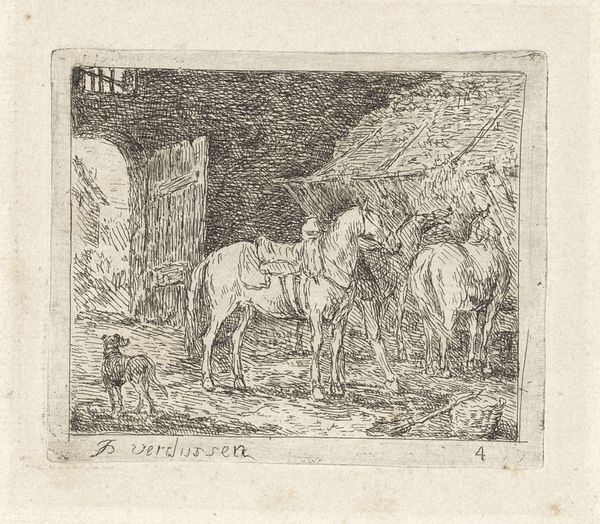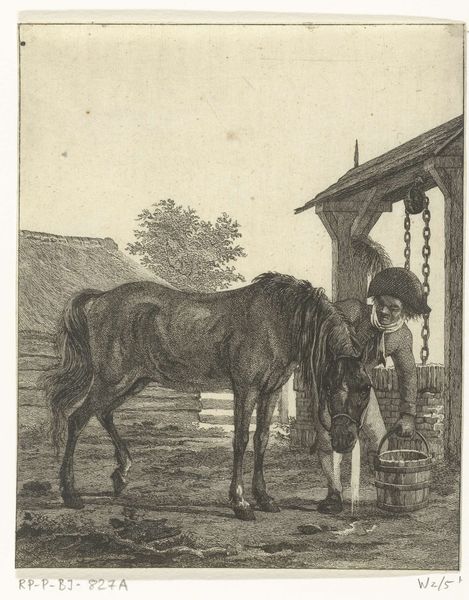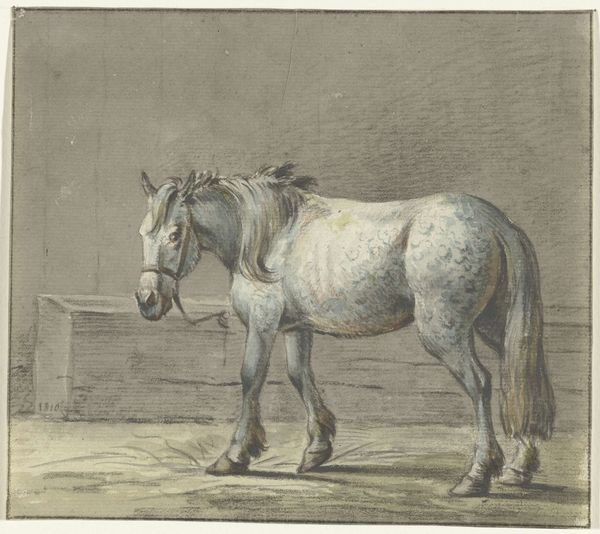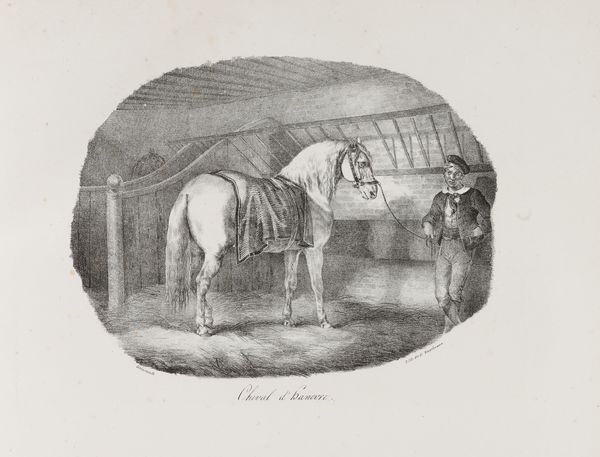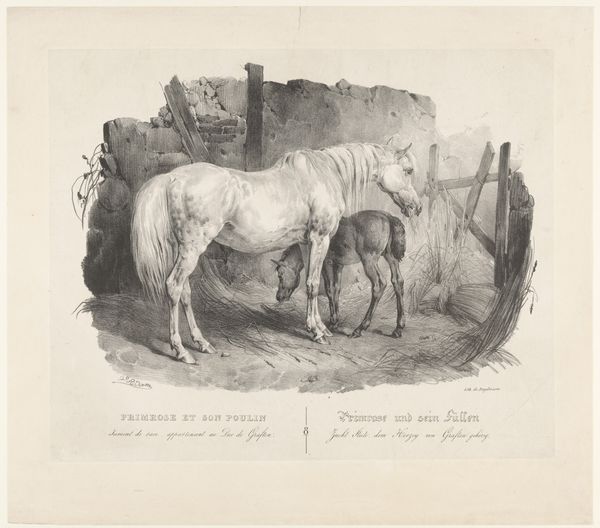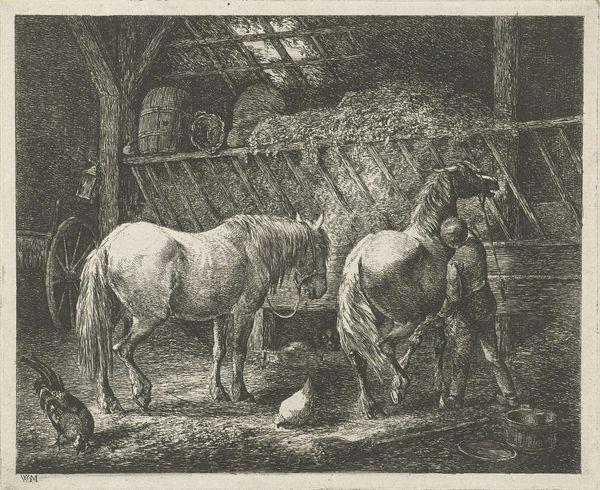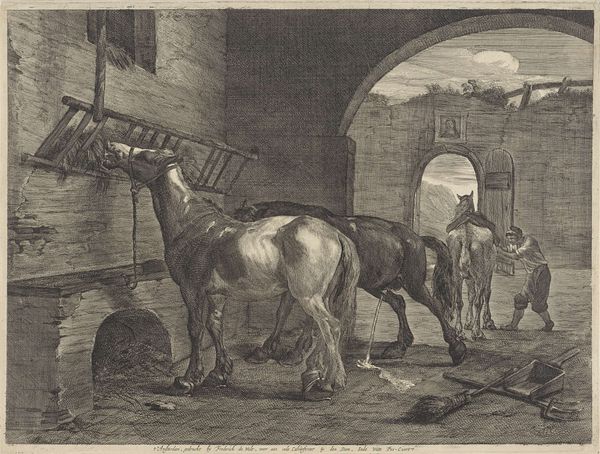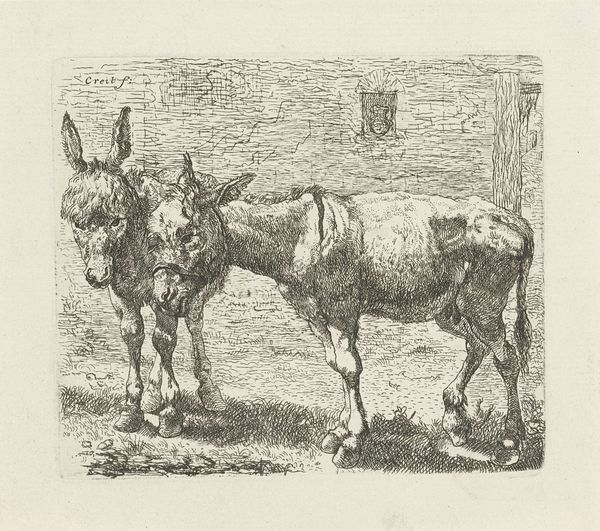
print, engraving
# print
#
old engraving style
#
landscape
#
19th century
#
genre-painting
#
engraving
Dimensions: height 245 mm, width 351 mm
Copyright: Rijks Museum: Open Domain
Curator: Let's delve into this engraving, "Ezel en veulen bij de hoefsmid," dating from 1840-1843, created by Johannes Mattheus Bogman. The interplay of the animals, blacksmith and pastoral setting makes for an inviting and busy atmosphere. How do you interpret this piece? Editor: I’m struck by the apparent contrast between the work being performed by the Blacksmith and the perceived lazy countryside life. What makes this more than just a genre painting? Curator: Focusing on materiality, let's consider the labor involved in its production. The engraver, Bogman, meticulously carves into a metal plate. Each line demanded intense physical and intellectual investment. The image itself depicts further labor, the work of the Hoefsmid (blacksmith) adding another layer of the creation of this object. Consider how this laborious artistic creation intersects with the industrial changes occurring in the 19th century? The traditional crafts in this genre painting could be perceived as a nostalgic tribute and subtle resistance. Editor: That's interesting, seeing the artwork itself as a form of labor protesting against the industrial labor it portrays. So the print then becomes an artifact documenting both production, labor, and protest. Is it uncommon for the subject and production to play symbiotic roles? Curator: Not at all, think of William Morris’s Arts and Crafts movement, which pushed back against industrialization through its production. Look closer – what can be said of the social commentary around the work, such as what's going on in the composition with animals seemingly unconcerned and left unattended. Editor: The seeming imbalance between attentiveness shown in the process of production against the more relaxed subject. Is it perhaps satirizing the upper class's obsession with hard-won craftsmanship being undertaken at the expense of the well-being of the source of labor? Curator: It certainly introduces that line of inquiry when we apply our materialist approach. This analysis can also influence your ideas when exploring similar pieces, considering the resources, both human and material, that shape the work. Editor: It makes you realize how much can be learned by focusing not just on the subject, but on the very act of its creation, a new layer that I have appreciated peeling back today!
Comments
No comments
Be the first to comment and join the conversation on the ultimate creative platform.
